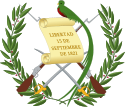Jean Meyer is a Mexican historian and author of French origin. He has published extensively on the Cristero War and on the caudillo Manuel Lozada.

Rafael Yela Günther was a Guatemalan painter and sculptor.
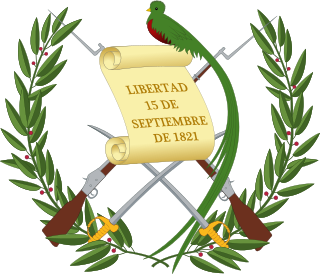
Parliamentary elections were held in Guatemala for half the seats in Congress between 16 and 18 January 1953. The Revolutionary Action Party won a plurality of seats.

Parliamentary elections were held in Guatemala for half the seats in Congress on 16 December 1950. The Revolutionary Action Party won a plurality of seats.
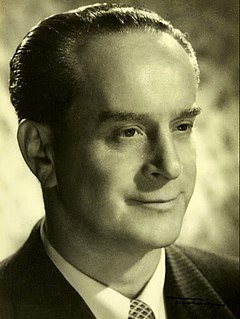
Presidential elections were held in Guatemala between 10 and 12 November 1950. The result was a victory for Jacobo Arbenz Guzmán, who received 65.44% of the vote. Voter turnout was 71.62%.

Parliamentary elections were held in Guatemala between 26 and 28 November 1948 in order to elect half the seats in Congress. The National Renovation Party-Revolutionary Action Party alliance won the most seats, but the Popular Liberation Front remained the largest party.

Parliamentary elections were held in Guatemala between 24 and 26 January 1947 in order to elect half the seats in Congress. The Revolutionary Action Party won a plurality of seats.
Legislative elections were held in Guatemala to elect members of the Congress on 3–5 November 1944.
A presidential election was held in Guatemala on 17–19 December 1944. The October Revolution of 1944 had overthrown Jorge Ubico, the U.S. backed dictator of Guatemala. A junta composed of Francisco Javier Arana, Jacobo Árbenz and Jorge Toriello took power, and quickly announced presidential elections, as well as elections for a constituent assembly. The subsequent elections took place in December 1944, and were broadly considered free and fair, although only literate men were given the vote. Unlike in similar historical situations, none of the junta members stood for election. The front-runner was the philosophically conservative University professor Juan José Arévalo, of the Renovación Nacional. Arévalo's closest challenger was Adrián Recinos, whose campaign included a number of individuals identified with the Ubico regime. The ballots were tallied on 19 December 1944, and Arévalo won in a landslide, receiving more than four times as many ballots as the other candidates combined.
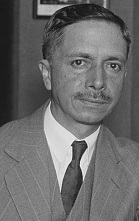
Presidential elections were held in Guatemala between 17 and 19 December 1944. The result was a victory for Juan José Arévalo, who received 86.25% of the vote.

General elections were held in Guatemala on 5 December 1926. The presidential election resulted in a victory for Lázaro Chacón González, who received 88.6% of the vote. Whilst the elections were rigged, the Progressive Liberal Party did manage to win some seats in the Congress.
United Front of Political Parties and Civic Associations was a political electoral front in Guatemala. The principal partners in the front were the National Democratic Front (FND), Popular Liberation Front (FPL), Central Democratic Party (PDC), Social Democratic Party (PSD), National Renovation Party (PRN) and the National Vanguard Party (PVN). The Front was formed on October 19, 1944. It disbanded after the Legislative elections of 1944.
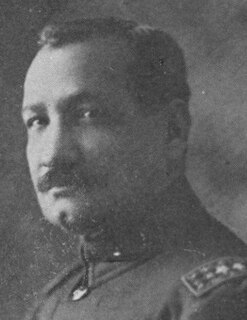
A presidential election was held in Guatemala on 15 December 1921.

The National Democratic Reconciliation Party was a moderate conservative party in Guatemala.

Presidential elections were held in Guatemala on 27 August 1920. The result was a victory for Carlos Herrera y Luna, who received 95% of the vote.

Indirect presidential elections were held in Guatemala on 8 April 1920. After two decades of repression and dictatorial rule, political opponents of Manuel Estrada Cabrera organized the Unionist Party (PU) in 1919. Led by Conservatives tied to the landed oligarchy, the Unionists also attracted support among the urban proletariat, artisans, students, and industrialists.
The Mexican People's Party was a political party in Mexico, founded in 1977. PPM was led by Alejandro Gascón Mercado. PPM was mainly based in the Nayarit and Jalisco states.
Juan Pablo Wainwright Nuila (1894–1932) was a Honduran revolutionary leader. A former member of the Canadian Army in World War I, he joined the Communist Party in El Salvador in 1928. He was expelled from the country that year, returning to Honduras. He was later identified as one of the major communist agitators in Latin America. After an escape from a Honduran prison in 1930, he was arrested in Guatemala in January 1932. Following a confrontation between Wainwright and Guatemalan dictator Jorge Ubico in a prison office, Ubico ordered Wainwright's execution.
